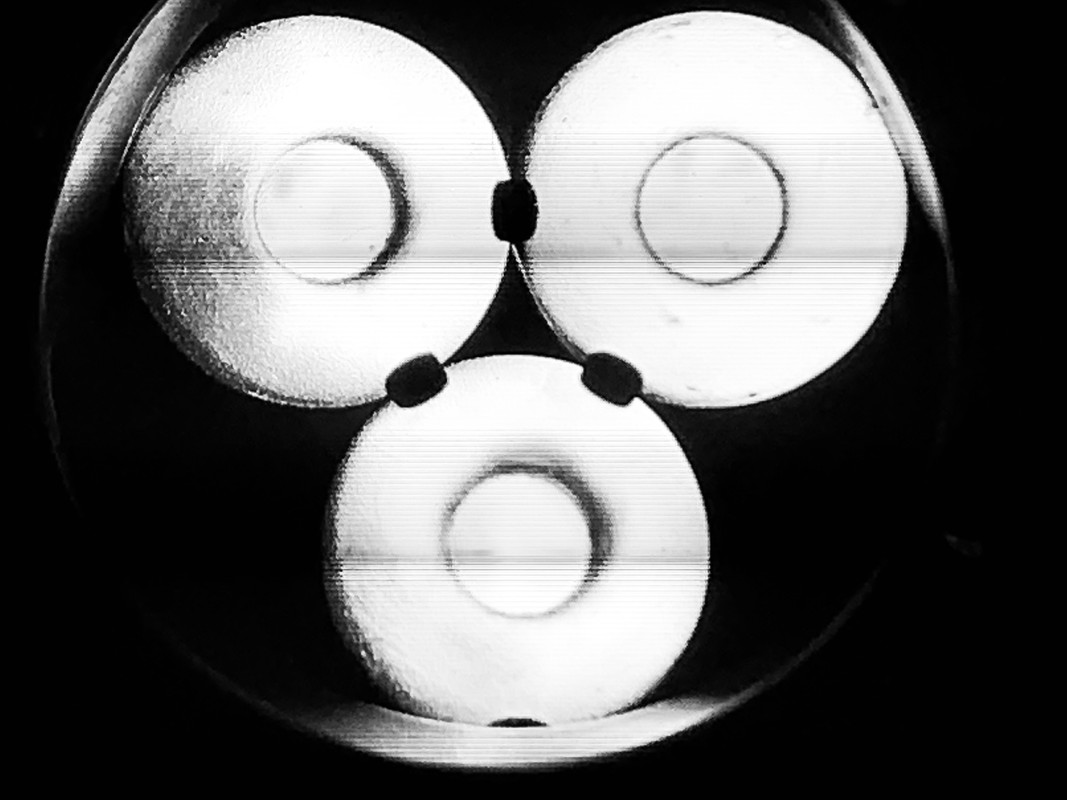Have you tried a better battery? What’s the resistance of the one you are using?
Thanks. I just emailed Neal to see about getting a replacement.
I’ve used a few different batteries with the same results. I even took it apart and made sure my solder joints and contacts looked good.
Probably the driver then. Let us know how the new one works.
I think i found the source of flickering issue. I decided to take out the driver and clean it with both acetone and IPA.
After cleaning, flickering is still there, but nowhere near as bad as it was. Now it completely stops flickering at 15+ ramp level (it was 35-40 previously). I wonder why it was dirty straight from the mail (I didn’t use flux for soldering) and which component is so sensitive to dirt.
Was your solder ‘rosin core’?
No, I was deliberately avoiding using any flux, because in past I had other flashlight drivers malfunction just from flux residue.
Maybe make sure to also disassemble and clean the tailcap contacts.
I recommend getting some Deoxit Gold for cleaning contacts.
Tailcap contacts seem to be fine. In my frustration to fix flickering, I already cleaned them and also checked if original driver would work and indeed it was working flawlessly.
I have 2 of these drivers installed in fw3x lights. Both have a very slight flicker at the lowest setting, but it’s unnoticeable unless I look very close at the light on my white table top.
Is the moonlight brighter on these than with the stock driver?
Yes
[Quote]Lowest moon mode is not as low as other 7135 systems - at the moment, it is a little brighter, but still usable. In fact, it is possible to reduce this even further, but the buck-boost goes into a pulse frequency modulated mode to save power / efficiency, and a flicker of about 100+Hz is visible. In fact, at lowest moon mode, a very slight ‘pwm’ of around 1kHz is present. This can all be removed, at the cost of decreased efficiency at low modes, so I think the trade-off is OK. Any higher and output quickly smooths out.
[/quote]
I would rather have less efficiency to get a smooth, flickerless, sublumen moonlight.
Looks like we need somebody to inspect it with good oscilloscope to see real picture ;))
Curious what loneoceans finds when he receives his… will be waiting patiently for that info ![]()
![]()
Used my phone camera to capture the PWM
FW3… Stock Driver

NovaTac Lume1…

I can’t see flickering in either… I guess I’m not…….“sniff”……. sensitive……. enough ![]() maybe I need training…
maybe I need training… ![]()


Stock driver is first, Lume1 is second, both shot at 1/4000 shutter speed.
My FW3A with lume driver looks like this. In real life it doesn’t look like pwm flicker, but more like candle mode. I tried to record a video of that, but even on manual camera settings it doesn’t really show up.

@Kapsyd One of my older drivers used to flicker in the same manner you’re describing when driven at moonlight lows. To the naked eye it appears to be a “candlelight flutter”. The issue had to do with the switching regulator being driven at such a low current that the voltage changes on the feedback pin weren’t sufficient enough to provide steady output. The sense resistor wasn’t generating enough mV of voltage drop to properly provide a compensation ramp within the regulator, and the result was completely random and sporadic bursts of light that could be considered circuit noise making it to the output.
The resolution would have been to use a larger value sense resistor, but that causes serious thermal issues at high output and lowers the efficiency of the circuit a great deal. As with all engineering, it’s a bit of a balancing act.
FIASCO!!! So, I installed the Lume1 board. If your FW3C is a first generation, the board is flat on one edge, so the Lume1 is not a drop in board. Okay, fine. Filed it unit it fit. Also, the solder pads on the triple emitter board are in a different place.
Then, I looked at my stash of wire…mostly 28AWG. Close enough! I used my medium tip Weller soldering station. And of course this didn’t work. Solder everywhere. No problem; I’ll just unsolder the AUX board and get a finer tip. NOPE. Lost two of the VERY small resistors.
Buy the tools first, then build the thing.
On the bright side, my FW3C is not running the new board (minus the fancy AUX LEDs).